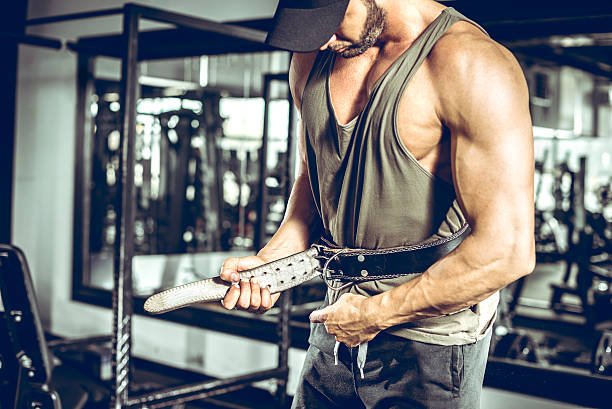A gym belt, also known as a weightlifting belt or lifting belt, is a sturdy belt made of materials like leather or nylon that is worn around the waist to provide support and stability during weightlifting and strength training exercises. Its primary purpose is to help prevent injuries and improve lifting performance. Here are the key uses, benefits, and potential side effects of using a gym belt:
Benefits of Using a Gym Belt:
1. Increased Intra-Abdominal Pressure:
A properly worn gym belt can help increase intra-abdominal pressure, which provides support to the lower back and core. This can be especially beneficial during heavy compound lifts like squats and deadlifts, where the lower back is under significant stress.
2. Reduced Risk of Injury:
By providing additional support to the spine and core muscles, a gym belt can help reduce the risk of lower back injuries, particularly when lifting heavy weights or performing exercises with improper form.
3. Improved Lifting Performance:
Some lifters find that using a belt allows them to lift heavier weights or perform more repetitions due to the added stability and confidence it provides. This can be beneficial for making strength gains.
4. Enhanced Mind-Muscle Connection:
For some individuals, a belt can help them focus on contracting the targeted muscle groups without worrying as much about stabilizing the core. This can be helpful for isolating specific muscles during exercises.
Side Effects and Considerations:
1. Dependency:
One potential drawback of using a gym belt is that some individuals may become overly reliant on it. This can lead to neglecting core strength development and proper lifting technique, which could increase the risk of injury in the long run.
2. Discomfort:
If not properly fitted or used incorrectly, a gym belt can be uncomfortable and may cause skin irritation or bruising. It's essential to ensure the belt is worn snugly but not excessively tight.
3. Limited Benefit for Some Exercises:
Gym belts are most beneficial for exercises that involve heavy lifting and high intra-abdominal pressure, such as squats, deadlifts, and overhead presses. For isolation exercises or lighter weightlifting, a belt may not be necessary and may even hinder performance.
4. Not Suitable for Everyone:
Gym belts are not recommended for everyone. Individuals with certain medical conditions or who are new to weightlifting should consult with a fitness professional or medical expert before using a belt.
A gym belt can be a valuable tool for experienced lifters performing heavy compound exercises, as it can help reduce the risk of injury and enhance lifting performance. However, it should not be seen as a substitute for proper form, core strength development, or a means to lift excessively heavy weights. It's essential to use a gym belt judiciously and ensure it is worn correctly to maximize its benefits while minimizing potential side effects. Beginners should focus on developing a solid foundation of strength and technique before considering the use of a gym belt.










